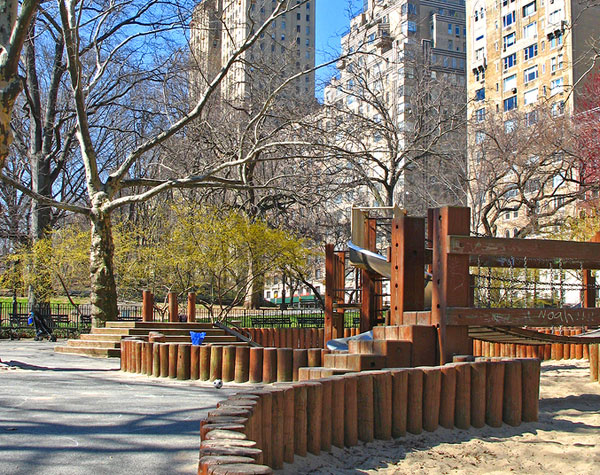Cost of Living in Saipan
Summary: If you're moving to Saipan, understanding the the cost of living in Saipan helps you know what to expect when it comes to apartment or house hunting, grocery shopping, transportation, dining out, utilities and more.

| Cost of Living | Saipan |
| Apartment Rentals | Rent for a one-bedroom apartment in the city center averages around $1,000 per month. Rent for a three-bedroom apartment in the city center averages around $1,500 per month. Rent for a one-bedroom apartment outside the city center averages around $800 per month. Rent for a three-bedroom apartment outside the city center averages around $1,200 per month. |
| Apartment Purchases | The median price for a one-bedroom apartment in the city center is around $200,000. The median price for a three-bedroom apartment in the city center is around $300,000. The median price for a one-bedroom apartment outside the city center is around $150,000. The median price for a three-bedroom apartment outside the city center is around $250,000. |
| Transportation | Public transportation is available in Saipan, with fares ranging from $1.50 to $2.50 per ride. Taxis are also available, with fares ranging from $3.00 to $5.00 per ride. Car rentals are available, with prices ranging from $50 to $100 per day. |
| Groceries | Basic groceries such as milk, bread, and eggs cost around $10 per week. A meal for two at a mid-range restaurant costs around $50. A bottle of mid-range wine costs around $20. |
| Restaurants | A meal for two at a mid-range restaurant costs around $50. A meal for two at a fast food restaurant costs around $20. A bottle of mid-range wine costs around $20. |
| Utilities | Basic utilities such as electricity, water, and garbage collection cost around $150 per month. Internet and cable TV cost around $100 per month. |
| Private School Tuition | Preschool tuition costs around $2,000 per year. Elementary school tuition costs around $3,000 per year. Middle school tuition costs around $4,000 per year. High school tuition costs around $5,000 per year. |
Monthly Budget for Retirees in Saipan
"The cost of living in Saipan varies depending on the lifestyle of an individual. Generally, basic goods and services such as groceries, utilities, and transportation tend to be reasonably priced compared to those of the U.S. mainland. Housing costs tend to be relatively high due to the limited availability, while entertainment and leisure activities are generally more affordable," said one expat living in Saipan.
"The cost of living in Saipan, can be considered moderate compared to other locations. Housing and utilities are relatively affordable, while groceries and transportation costs are slightly higher due to the island's remote location. Healthcare and education expenses can also be higher than average, as there are limited options available on the island. Dining out and entertainment options are available but can be pricey, especially in tourist areas. Overall, the cost of living in Saipan is manageable, but it may be higher than in some mainland U.S. cities," wrote a member in Saipan.
Can I live in Saipan on $1,500 a month?
"I've been living in Saipan for a while now, and I can tell you that it's possible to live on $1,500 a month, but you'll have to make some sacrifices. First, you'll need to find a place to live that's affordable. Some of the more expensive neighborhoods, like Garapan and Susupe, might be out of your budget. Instead, consider looking for a place in areas like Chalan Kanoa or San Antonio, where rent is more affordable. You might have to settle for a smaller apartment or a shared living situation to keep costs down.Next, you'll need to be mindful of your utility bills. Electricity can be quite expensive here, so try to conserve energy by using fans instead of air conditioning, and unplug electronics when they're not in use. Water is also costly, so be conscious of your usage and try to conserve where you can.Transportation is another area where you can save money. Owning a car can be expensive, so consider using public transportation or getting a bicycle to get around. If you do need a car, look for a fuel-efficient model to save on gas.When it comes to food, eating out can be pricey, especially in the touristy areas. To save money, try cooking at home more often and shopping at local markets for fresh produce. You can also find more affordable grocery stores, like Joeten or 99 Cents Store, to help keep your food budget in check.Entertainment and leisure activities can also add up quickly. Instead of going out to bars or clubs, consider more budget-friendly options like going to the beach, hiking, or exploring the island's natural beauty. There are also free or low-cost community events and festivals throughout the year that you can attend.In summary, living on $1,500 a month in Saipan is doable, but you'll need to be mindful of your spending and make some sacrifices. By choosing a more affordable neighborhood, conserving utilities, using public transportation, cooking at home, and finding low-cost entertainment options, you can make it work," commented an expat living in Saipan.
Can I live in Saipan on $3,500 a month?
"I've been living in Saipan for a while now, and I can tell you that it's definitely possible to live comfortably on $3,000 a month, but you'll have to make some adjustments to your lifestyle. First, you'll need to find a place to live that's within your budget. Some of the more affordable neighborhoods are Chalan Kanoa, Susupe, and San Antonio. These areas have a mix of apartments and houses, and you can find a decent place for around $800 to $1,200 a month. I'd avoid the more expensive neighborhoods like Garapan and Navy Hill, as rents there can be quite high.As for utilities, electricity can be quite expensive here, so you'll want to be mindful of your usage. Water is also a bit pricey, but it's manageable if you're careful. Internet service is available, but it's not as fast or reliable as you might be used to, and it can be a bit expensive as well. You'll also need to budget for groceries, which can be a bit more expensive than on the mainland due to the cost of shipping items to the island. However, if you shop at local markets and buy fresh produce, you can save some money.Transportation is another expense to consider. While there is a public bus system, it's not very reliable, so you'll probably want to have your own car. Gas prices are higher than on the mainland, but since the island is small, you won't be driving long distances. You can find a used car for a reasonable price, but be prepared to pay a bit more for maintenance and repairs, as parts can be expensive and sometimes hard to find.As for entertainment and dining out, there are some options, but they can be pricey. You'll probably want to limit how often you eat out and look for more affordable local spots. There are some beautiful beaches and outdoor activities to enjoy, which are mostly free or low-cost. You might also want to join a local sports league or club to meet people and stay active.In summary, living in Saipan on $3,000 a month is doable, but you'll need to be mindful of your expenses and make some adjustments to your lifestyle. By choosing an affordable neighborhood, being conscious of your utility usage, and finding low-cost entertainment options, you can make it work and enjoy your time on this beautiful island," said one expat living in Saipan.
Can I live in Saipan on $5,000 a month?
"I've been living in Saipan for a few years now, and I can tell you that it's definitely possible to live comfortably on $5,000 a month, especially if you're used to modern amenities. However, there are some sacrifices you'll have to make to ensure you stay within your budget.Firstly, you'll want to find a place to live that's affordable but still offers the amenities you're used to. Some of the more expensive neighborhoods, like Garapan and Susupe, might be out of your budget if you're trying to save money. Instead, consider looking for a place in areas like Chalan Kanoa, San Antonio, or As Lito. These neighborhoods are more affordable and still offer decent housing options.When it comes to utilities, you might find that electricity is a bit more expensive than you're used to, so you'll want to be mindful of your usage. Water, on the other hand, is relatively cheap, so that shouldn't be a problem.Groceries can also be a bit pricey, especially if you're looking for imported goods. To save money, try shopping at local markets for fresh produce and seafood, and consider buying local brands instead of imported ones when possible.Eating out can be affordable if you stick to local restaurants and avoid the more touristy areas. There are plenty of delicious local dishes to try, so you won't feel like you're missing out on anything.Transportation is relatively cheap, especially if you're willing to use public transportation or rent a scooter instead of a car. Gas prices can be high, so using a more fuel-efficient mode of transportation will help you save money.As for entertainment, there are plenty of free or low-cost activities to enjoy, like hiking, snorkeling, and exploring the beautiful beaches. However, if you're looking for more upscale entertainment options, like fine dining or high-end shopping, you might have to make some sacrifices or budget accordingly.Overall, living in Saipan on $5,000 a month is doable, but you'll need to be mindful of your spending and make some adjustments to your lifestyle. By choosing a more affordable neighborhood, being conscious of your utility usage, and enjoying the local culture and natural beauty, you can live comfortably and still have a great experience," commented an expat living in Saipan.
About the Author
 Joshua Wood, LPC joined Expat Exchange in 2000 and serves as one of its Co-Presidents. He is also one of the Founders of Digital Nomad Exchange. Prior to Expat Exchange, Joshua worked for NBC Cable (MSNBC and CNBC
Primetime). Joshua has a BA from Syracuse and a Master's in Clinical and Counseling Psychology from Fairleigh Dickinson University. Mr. Wood is also a licensed counselor and psychotherapist.
Joshua Wood, LPC joined Expat Exchange in 2000 and serves as one of its Co-Presidents. He is also one of the Founders of Digital Nomad Exchange. Prior to Expat Exchange, Joshua worked for NBC Cable (MSNBC and CNBC
Primetime). Joshua has a BA from Syracuse and a Master's in Clinical and Counseling Psychology from Fairleigh Dickinson University. Mr. Wood is also a licensed counselor and psychotherapist.
Some of Joshua's articles include Pros and Cons of Living in Portugal, 10 Best Places to Live in Ireland and Pros and Cons of Living in Uruguay. Connect with Joshua on LinkedIn.
Additional Information:
- Cost of Living in Saipan
- Healthcare & Health Insurance in United States
- Best Places to Live in United States
- Real Estate in United States
- Pros & Cons of Living in United States
- Top 10 Things To Do For Expats Living in New York City
- Pros and Cons of Living in United States 2024
- 2024 Guide to Moving to United States

 Saipan, The United States
Saipan, The United States


